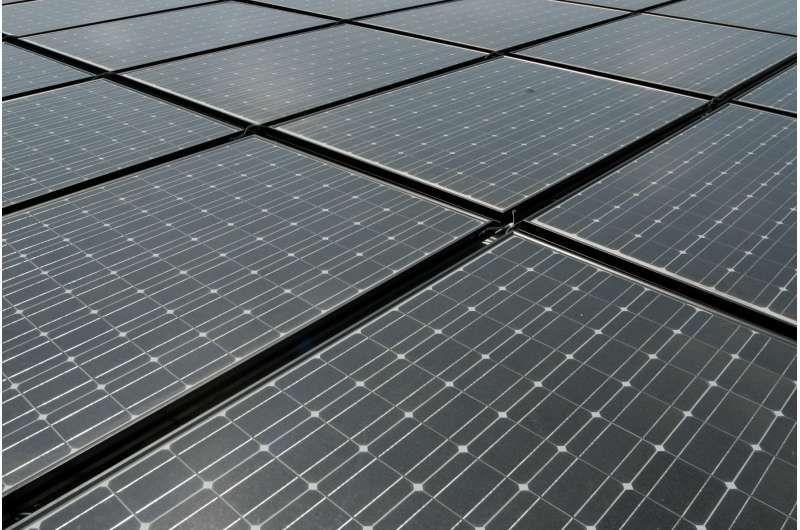A polarization-driven guide to making high-performance, versatile solar cells

Improving solar cell design is integral for improving energy consumption. Scientists have lately focused on making solar cells more efficient, flexible, and portable to enable their integration into everyday applications. Consequently, novel lightweight and flexible thin film solar cells have been developed. It is, however, not easy to combine efficiency with flexibility. For a material (usually a semiconductor) to be efficient, it must have a small 'band gap'—the energy required to excite charge carriers for electrical conduction—and should absorb and convert a large portion of sunlight into electricity. Till date, no such efficient absorber suitable for thin film solar cells has been developed.
Typically, charge carriers in a semiconductor are generated in pairs of negatively charged electrons and positively charged "holes" (essentially, the "absence" of electrons). For efficient electrical conduction, these electrons and holes need to be separated. A class of materials called "ferroelectrics" can greatly facilitate this separation, thanks to their spontaneous "electric polarization," a phenomenon analogous to spontaneous magnetization in iron. However, due to large band gaps and poor light-to-electricity conversion, they have seen limited photovoltaic applications.
In a new study published in Applied Materials and Interfaces, scientists from Korea addressed this issue and proposed a novel solution in the form of 'antiperovskite' oxides, denoted as Ba4Pn2O, with Pn as stand-in for Arsenic (As) or Antimony (Sb). Using density functional theory calculations, scientists investigated various physical properties of the antiperovskite oxides and revealed that they exhibit spontaneous electric polarization, making them ferroelectric in nature. Prof. Youngho Kang from Incheon National University, who led the study, explains, In the minimum energy configuration of the Ba4Pn2O structure, we found that the O ions and the Ba ions are displaced from their original positions in opposite directions. These displacements gave rise to a non-zero electric polarization, a classic signature of ferroelectricity."
Since the spontaneous polarization assists in the separation of electron-hole pairs, this implied that antiperovskite oxides could efficiently extract charge carriers. In addition, the calculations showed that their band gaps are ideal for efficient sunlight absorption, allowing even a very thin layer of Ba4Pn2O to yield substantial photocurrent.
Such promising results have excited the scientists about the future prospects of thin film solar cells. Prof. Kang surmises, "Our results are a firm confirmation that antiperovskites can make for efficient absorbers for thin-film solar cells. Given their versatility, there can be several real-life applications for these solar cells, even to charge cell phones when sunlight is available. Moreover, their flexibility can allow for making self-driving wearable devices like smartwatches."
More information: Youngho Kang et al, Antiperovskite Oxides as Promising Candidates for High-Performance Ferroelectric Photovoltaics: First-Principles Investigation on Ba4As2O and Ba4Sb2O, ACS Applied Materials & Interfaces (2020). DOI: 10.1021/acsami.0c13034


















